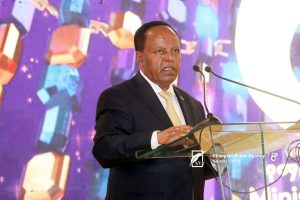
The United Nations Capital Development Fund and the United Nations Department of Economic and Social Affairs conducted a workshop on municipal Asset Management Action Plans in Gulu, Uganda from 3 to 6 December 2019, putting 22 local governments on the path to proactive asset management, according to APO group.
As to the press release, with a generous financial contribution from the European Union in the context of the Development Initiative for Northern Uganda, the workshop funded the participation of 95 local government officials from 22 districts and municipalities. Key officials from the central government participated as well.
The workshop incorporated the findings of the large scale application of the United Nations Department of Economic and Social Affairs (UN DESA) and United Nations Capital Development Fund (UNCDF) diagnostic tool on municipal asset management in 20 districts and municipalities of Uganda over the course of 2019.
The process was overseen by a joint committee of senior central government officials from the ministries of finance and local government. The Government of Uganda established the Committee to follow up on the outcome of the first United Nations Asset Management Action Plans workshop in Gulu in October 2018.
As with the previous cohort, the four-day workshop started with a guided tour of Gulu municipal assets. The team was intrigued to see what has changed since the last training. The first stop was the registry-what once looked like a junkyard with old equipment and documents strewn about, now has the semblance of a storeroom.
The old equipment and scrap have all been cleared out and the heaps of unfiled documents organized into files. The older documents have been stored away in a case. The municipal council is yet to figure out a filing system, but the re-organization of the store is a first step towards more effective asset management.
A year later, across at the municipal yard, still grounded, is a tractor gathering strays: a rug, an old sponge and a broken table, while garbage collection around the municipal council continues to be minimized, unmanaged wasted poses potential health risks in spreading disease.
What does it take to get the fairly new tractor up and running? A set of tyres that cost about approximately 800 USD. It seems like an easy solution, but the municipal engineer explains the cost of the tyres has not been included in the annual work plan and budget submitted for the current financial year. Given the rigid processes and procedures, he believes it is unlikely that at this time the cost will be included into the year’s plan, and, as such, the tractor will probably remain parked for at least another year.
The longer the tractor remains unused, it risks developing other issues such as mechanical problems or getting vandalized, which will render it inoperative and require, not just replacement of tyres, but the entire tractor unit which is at least thirty times the cost of the tyres.
Though there are no readily available figures, it is estimated that every year the Government loses billions of shillings replacing mismanaged assets, as local governments continue to struggle with lean financial resources given the ever decreasing allocations from the central government. Yet, if the assets are properly maintained, costs can be reduced, efficiency maximized and service delivery guaranteed.
“More effective asset management will let citizens enjoy more dependable services without unexpected failures and indefinite interruptions,” remarked John Walala, Director Local Government Inspection, Ministry of Local Government at the opening of the workshop in Gulu, as he urged local government officials to take ownership and responsibility for government assets under their stewardship.
To ensure improved delivery of essential public services and ultimately achieve the Sustainable Development Goals, local governments have to prioritize the management of public assets, to make the most of what they already have to deliver services. Effective asset management looks at the entire lifecycle of an asset from acquisition through maintenance and disposal. But first, local governments need to know what assets they own and their condition to effectively manage and utilize them.
Prior to the training workshop, United Nations Capital Development Fund and the United Nations Department of Economic and Social Affairs supported the participating local governments to undertake an asset management profiling survey to ascertain existing asset management systems. The survey revealed most local governments lack updated registers, nor clear management systems for the existing assets. For instance out of the 20 local governments only eight had updated building registers.
Admittedly there is laxity with how government officials manage government assets but the rigid processes and procedures, various systems and legal frameworks give way to uncertainty.
“We have heard complaints from officers, and acknowledge there are inconsistencies within the various legal frameworks that we have to harmonize to streamline how assets are managed at a national level,” said Jennifer Muhuruzi Bigirwa as she discussed the draft asset management framework set to be in place July 2020, which will provide guidelines on how to operate, maintain and allocate assets.
Over four days, the participants who were grouped according to their local governments were tasked to develop asset management action plans focusing on one priority asset. The groups presented their plans and received feedback from colleagues and facilitators on how to refine these plans.
“The template developed for the training was carefully designed and should be adopted by ministries and local governments and customized to develop various action plans relevant to the institution,” shares Marley Ben Lawrence Deputy Chief Administrative Officer, Kole District Local Government.
For Julius Eonyorello, District Engineer Amuria District Local Government the training went well as it targeted the right people, “People have been ignoring maintenance, as an individual you push for it but get overpowered. It’s good that the decision makers like the administrative officers are also present at this training so they can understand the need.”
The training comes at a time when Uganda is preparing for her Third National Development Plan which comes into effect in June 2020. The Third National Development Plan is the third in a series of plans whose objective is to implement the Uganda Vision 2040 aspiration to become a middle income country by 2040.
One of the strategies of the development strategies of the Third National Development is to increase domestic revenue mobilization. Over coming months United Nations Department of Economic and Social Affairs (UN DESA) and United Nations Capital Development Fund (UNCDF) will continue to provide technical assistance to the local governments to ensure their Asset Management Action Plans are linked to the revenue mobilization action plans as well as Third National Development Plan.
Uganda is one of four countries including Tanzania, Bangladesh and Nepal being supported by United Nations Department of Economic and Social Affairs and United Nations Capital Development Fund in the introduction of the Asset Management Action Plans.
The Development Initiative for Northern Uganda is a Government of Uganda programme overseen by the Office of the Prime Minister and financed by the European Union whose overall goal is to consolidate stability in Northern Uganda, reduce poverty and under-nutrition and strengthen the foundations for sustainable and inclusive socio-economic development. United Nations Capital Development Fund works with select local governments to strengthen their capacity to fulfill their core mandate.
The Ethiopian Herald Sunday Edition 12 January 2020
BY MEHARI BEYENE





